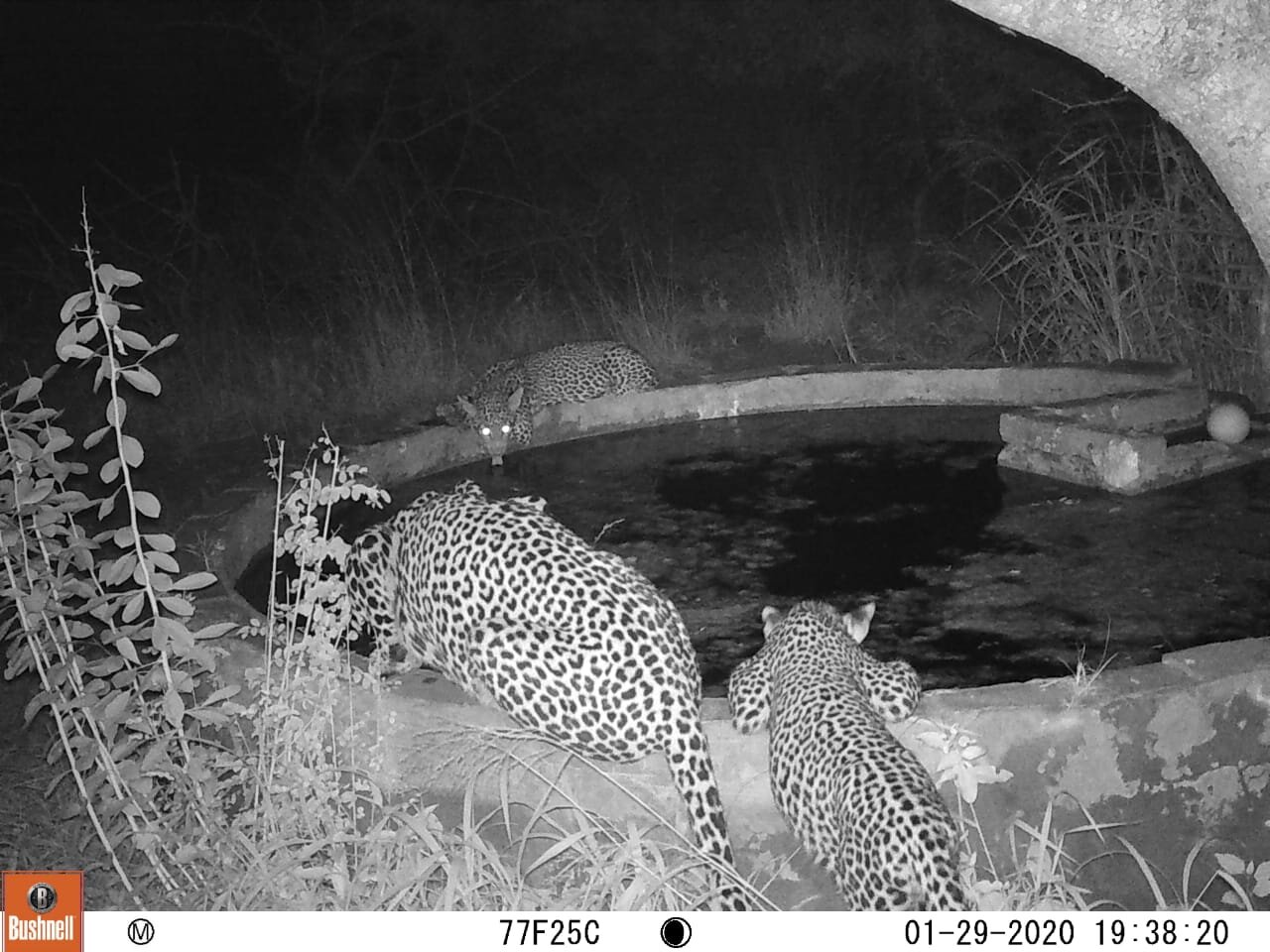ENDANGERED SPECIES DAY 2020
Today is Endangered Species Day, celebrated every year on the third Friday of May, to raise awareness about endangered species and to recognize international conservation efforts to protect them and their habitats. To mark Endangered Species Day this year, we highlight some of the key species that Wild Tomorrow Fund is protecting at our Ukuwela and Mfuleni Nature Reserves in South Africa.
African Wild Dog, a Critically Endangered Species. Photo Credit: Shannon Wild
Endangered species are those that sit on the precipice of extinction. Because the overwhelming cause of their endangered status is due to human-related activity or pressures, their fate more often than not rests in our hands. Today a staggering 1 million species are at risk of extinction, many within decades, unless urgent action is taken.
The International Union for Conservation of Nature (IUCN) is responsible for, among many other things, compiling the Red List of Threatened Species, which assesses the conservation status of species around the world. Scientists working in the field, collecting data, and experts on each species assess the current status of as many lifeforms as possible and classify them based on set criteria such as rate of decline, overall population estimates, and rate of habitat loss.
These conservation status classifications relate to how close a species is to going extinct, on a scale of “Least Concern” to “Extinct”.
There are many species in fact that globally are listed as “Least Concern”, but in certain regions or parts of their range they might actually be listed as “Vulnerable” or “Endangered”. Such is the case for multiple species on Wild Tomorrow Fund’s Greater Ukuwela Nature Reserve. For instance the suni antelope (Neotragus moschatus) is regionally listed as endangered due to the decline of its forest habitat in South Africa, but globally as a species of “Least Concern”. That doesn’t mean we shouldn’t be concerned, since this actually means that the southernmost populations of the suni are likely to face extinction and the species as a whole will lose a portion of its range.
Camera trap photo of a suni antelope from Wild Tomorrow Fund’s Greater Ukuwela Nature Reserve
One of Africa’s largest storks, the Saddle-Billed Stalk Photo courtesy of Martin Harvey/WildScreen Exchange. .
The same is true for the saddle-billed stork (Ephippiorhynchus senegalensis), which are endangered in South Africa and sometimes seen along the banks of the Mzinene River on Ukuwela. However, globally the species is listed as “Least Concern”. The reason for its nationally endangered status is because of the decline of wetlands across the country. The preservation and formal protection of Ukuwela and Mfuleni as a Nature Reserve is helping to secure habitat for the saddle billed stork and to halt its decline.
Then there are species that sadly are endangered across the board. This is true for the African wild dog or African painted wolf (Lycaon pictus), whose numbers are less than 7,000 globally. The painted wolf is globally endangered, meaning their entire population is at serious risk of extinction and conservation action is needed where they still exist. Painted wolves can utilize massive areas and when they disperse from their natal packs can travel hundreds of miles in search of other partners. Because of the fragmented landscape of protected natural areas in South Africa, the wolves unavoidably pass through unprotected areas such as livestock farms and human communities, which leads to their increased chance of persecution.
Wildlife corridors can solve this issue. Corridors are the often smaller links of lands that connect larger protected areas to one another. By protecting these pieces and just providing a safe place for passage, endangered large carnivores like the African painted wolf can move safely from one protected area to another without harm or conflict. This is exactly how Wild Tomorrow Fund’s Mfuleni Corridor has worked, which connects Phinda Private Game Reserve and iSimangaliso Wetland Park (a UNESCO World Heritage Site). Painted wolves have been seen multiple times using our corridor piece, most recently late last year when a pair moved through the reserve without issue.
Camera trap photograph from Wild Tomorrow Fund’s Greater Ukuwela Nature Reserve
There is another threatened large carnivore that rules our reserves that holds the status of “Vulnerable” both regionally and globally; the leopard (Panthera pardus). This classification sits just below endangered, meaning that leopards are vulnerable to extinction and if their status continues to decline they will become endangered. Wild Tomorrow Fund is proud to have several resident leopards on our reserves and in the last year we’ve recorded two mothers who have had litters.
Big Cats Abound! Camera trap image of a leopard at our Mfuleni Reserve.
In January of this year we started recording a leopardess who had two cubs on Mfuleni and we’ve been able to monitor their growth via camera traps since (see photo below).
Camera trap photo from the Mfuleni section of Wild Tomorrow Fund’s Greater Ukuwela Nature Reserve.
Extinction is Forever. That phrase rings true for the millions of species that have come before us and sadly for many that have passed through this world even in our lifetimes. For those species that hold the status of “Critically Endangered”, they are but a breath away from slipping into extinction and require the utmost protection and attention. At least one of these extremely rare species occurs on Ukuwela, the southern banded snake eagle (Circaetus fasciolatus). Regionally listed as Critically Endangered, there are estimated to be only around 50 adult individuals in the entire country of South Africa. Wild Tomorrow Fund is fortunate enough to have at least one pair of these birds commonly found our Conservancy, proving that even smaller reserves can play a large role in endangered species protection.
A Southern banded snake eagle, photo courtesy of Peter Pickford/Wildscreen Exchange
The selection of endangered and threatened species mentioned above aren’t the only ones found on our Greater Ukuwela Nature Reserve, but certainly mammals and birds make up a good portion of the listed species. Sadly most species are not assessed at all or remain in the “Data Deficient” category. Many more would likely be listed under a threatened status such as endangered, but this status is not handed out lightly or without extreme scientific rigor and scrutiny. Most species, especially those less conspicuous and charismatic, lack the necessary surveying and censusing to determine if they are indeed plentiful or on the verge of extinction. Given the current extinction rate and the number of species estimated to currently be unknown to science, 200-2,000 species go extinct every year, most without being studied or even named. Last year, our entomologist Barbara Wright discovered a new species of widow spider, the Phinda Button Spider (Lactrodectus umbukwane), the first global discovery for this genus of spiders in 29 years. Its conservation status is currently unknown given its recent discovery. Many more endangered species currently exist, yet to be discovered, and could be months away from vanishing entirely from our fragile planet.
To be endangered is by definition to be rare, and we tend to give more value to things that are scarce or limited in our environment. Countless men and women have died over “precious” metals such as gold and silver, which only hold such lofty value to us because of their rarity. In the conservation world, endangered species are held to a similar level of eminence, however we need the rest of the world to view them and hold them to the same regard. These species are not special because they are unique or because they have done something deserving of this title, they hold this status largely because we have put them there. We owe it to them to do whatever we can to remove that label, before we have to label them extinct.
REFERENCES
IUCN Red List of Threatened Species. www.iucnredlist.org
PBES (2019): Summary for policymakers of the global assessment report on biodiversity and ecosystem services of the Intergovernmental Science-Policy Platform on Biodiversity and Ecosystem Services. S. Díaz, J. Settele, E. S. Brondízio E.S., H. T. Ngo, M. Guèze, J. Agard, A. Arneth, P. Balvanera, K. A. Brauman, S. H. M. Butchart, K. M. A. Chan, L. A. Garibaldi, K. Ichii, J. Liu, S. M. Subramanian, G. F. Midgley, P. Miloslavich, Z. Molnár, D. Obura, A. Pfaff, S. Polasky, A. Purvis, J. Razzaque, B. Reyers, R. Roy Chowdhury, Y. J. Shin, I. J. Visseren-Hamakers, K. J. Willis, and C. N. Zayas (eds.). IPBES secretariat, Bonn, GermanySummary for Policymakers of the IPBES Global Assessment on Biodiversity and Ecosystem Services. Available Online at: http://bit.ly/GlobalAssessmentReport








